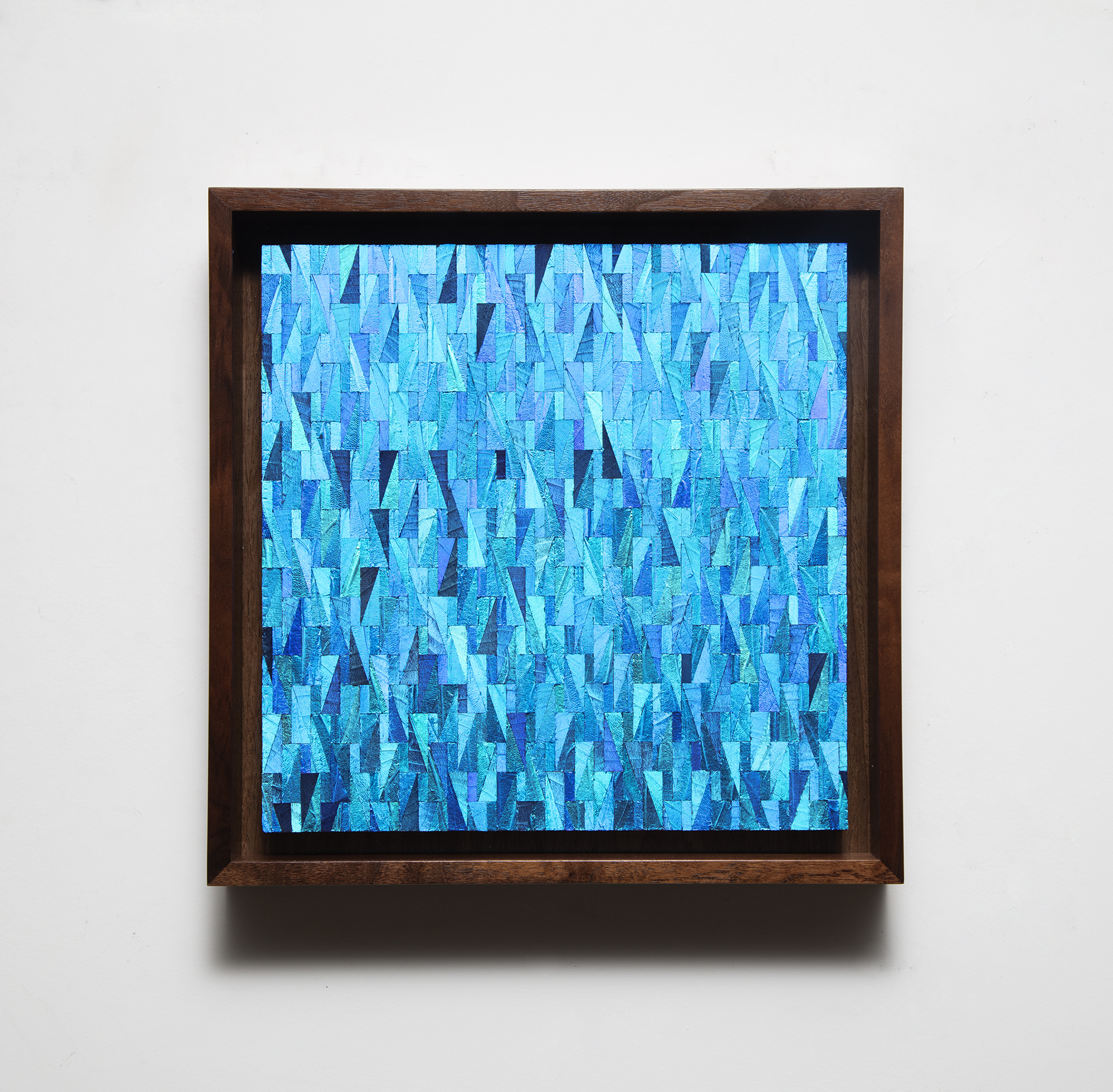
Morpho didius butterfly wings fragments on museum cardboard
35 x 35 x 6 cm
13.78 x 13.78 x 2.36 in
Gabriel de la Mora
752 I Mo.Di.,¨鱗翅目¨系列,2023 年
博物館紙板, 大閃蝶蝴蝶翅膀碎片
13.78 x 13.78 x 2.36 英寸/35 x 35 x 6 厘米
Gabriel de la Mora
752 I Mo.Di.,选自《鳞翅目》系列,2023 年
博物馆卡纸上的大蓝闪蝶(Morpho didius)翅膀碎片
13.78 x 13.78 x 2.36 英寸 / 35 x 35 x 6 厘米
Lepidoptera
For Lepidóptera, De la Mora uses butterfly wings to create mosaics based on the repitition of patterns that reveal the differences between each fragment used. These variations are determined by the amount of genetic information, which is a macro-account of the species, intertwined with traces of the life of each individual, whose time and natural environment defined its unique characteristics. The wing fragments - acquired in butterfly farms that promote the collection of specimens killed by natural causes for the preservation of species at risk of extinction forming planes that are resolved in a uniformity that is sometimes geometric, sometimes fractal.
鱗翅目
在¨鱗翅目¨系列中,德拉·莫拉使用蝴蝶翅膀製作馬賽克,圖案重複顯示每個碎片之間的 差異。 這些差異是由遺傳訊息的數量決定的,它是物種的宏觀記錄,與每個個體的生活 痕跡交織在一起,其時間和自然環境決定了其獨特的特徵。 這些翅膀碎片是從蝴蝶養殖 場獲得的,這些蝴蝶養殖場致力於收集因自然原因而死亡的蝴蝶標本,以保護瀕臨滅絕的
物種。
鳞翅目
在《鳞翅目》中,Gabriel de la Mora使用蝴蝶翅膀制作马赛克,通过重复图案来揭示每个片段之间的差异。这些差异是由遗传信息的数量决定的,遗传信息是物种的宏观记录,与每个个体的生活痕迹交织在一起,其时间和自然环境决定了其独特的特征。这些翅膀碎片是从蝴蝶养殖场获得的,这些蝴蝶养殖场收集因自然原因而死亡的蝴蝶标本,以保护濒临灭绝的物种。